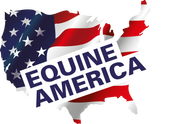Stallion fertility, it’s all about the cocktails..

Stallion fertility is a complex matter and an area where nutrition plays a key role. Sperm quality is directly impacted by select nutrients, each acting individually and with its own mode of action. However, focusing on just one nutrient will bring only limited results. When reviewing the dietary needs of a stallion and looking to enhance fertility the best approach is that of a cocktail of nutrients.
So, what makes the perfect cocktail for stallion fertility?
Fatty Acids
Sperm membranes contain a high level of polyunsaturated fatty acids (PUFAs), including omega 6 and omega 3 fatty acids. As horses cannot synthesize PUFAs from other fatty acid sources they must be fed specifically in the diet. PUFAs are essential to maintaining the structure, function and integrity of sperm membranes, and are an important factor when reviewing the diet of a stallion.
The natural diet of horses, at pasture, is well balanced for omega 6 and omega 3 fatty acids and the level provided is sufficient for good health. When diets change and become more reliant on dried forages the total intake lowers, as dried forages are not as high in either omega 6 or omega 3 fatty acids. In addition, if feed is needed to maintain good body condition, and meet the demands of the covering season, the balance of omega 6 and omega 3 fatty acids will change. Feeds are typically higher in omega 6, meaning a source of omega 3 fatty acids needs to be provided in addition to bring the total diet back into balance and ensure adequate provision for sperm membrane function.
Antioxidants
The high level of PUFAs in sperm membranes makes them susceptible to oxidative stress, especially lipid peroxidation from reactive oxygen species (ROS). As part of normal metabolism within cells reactive oxygen species are created and these molecules have important jobs to do, being part of signalling between cells and immune defence. So ROS are not ‘bad’, but when there is an excess produced, or an imbalance between ROS and antioxidants, then damage occurs to cellular structures such as the lipid membranes that are important for normal sperm function.
Antioxidants are the counterbalance to ROS. Antioxidants have the ability to stabilise and neutralise ROS, meaning they are no longer reactive and will not interact with cellular structures. Dietary provision of antioxidants is essential to maintaining a favourable balance and protecting susceptible structures such as sperm membranes.
Providing PUFAs in the diet is important for providing the building blocks of sperm membranes but antioxidants must be provided at the same time to provide protection and ensure integrity of the sperm membrane. There are many dietary sources of antioxidants, including vitamins such as vitamin E or C, minerals including selenium, and plant based extracts rich in polyphenols such as grape extract and beetroot. Each works slightly differently in the body but all work towards the same goal, to neutralise ROS and reduce the risk of damage at cellular level.
When considering antioxidants for stallions the best approach is to provide more than one source as antioxidants are team players and work most effectively in the body when provided in combination. For example, when Vitamin E is oxidised, having done its job and neutralised a ROS, vitamin C will revitalise Vitamin E back to its active antioxidant state. By working together antioxidant protection can be maintained and provide more effective levels of support.
Amino Acids
Amino acids are another aspect of nutrition to consider for the stallion, with research highlighting the benefit of using specific amino acids to support sperm function.
L-carnitine is an amino acid with a variety of benefits for stallions. It is involved in transporting long chain fatty acids, an important energy source for sperm. Supplementation with L-carnitine is linked with improved sperm motility. It also has antioxidant properties, and works alongside other antioxidants to protect sperm membranes. Research into L-carnitine also shows benefits for sperm morphology (shape). The shape of sperm is important as abnormal shape can impact the sperm’s ability to fertilise an egg.
L-arginine is also an amino acid of interest. It is a precursor to nitric oxide (NO), a molecule that helps dilate blood vessels and improves circulation, which can help improve delivery of nutrients and oxygen needed for sperm production and function. It also has antioxidant properties and is linked with sperm morphology, as well as improved sperm count.
Mycotoxin remediators
Mycotoxins are naturally occurring environmental pollutants that enter the body through ingestion or inhalation. Mycotoxins are found in feed materials and forages, including pasture. There are hundreds of different mycotoxins, with new ones emerging, creating health challenges and concerns around reduced fertility in all species. Mycotoxin remediators are substances that adsorb mycotoxins, rendering them inactive and allowing them to pass safely out of the body. As mycotoxins are invisible to the human eye the best approach is to reduce risk by feeding a broad-spectrum mycotoxin binder, such as Mycosorb.
As there many nutritional factors that feed into and influence stallion fertility it is important to choose a support supplement that addresses each aspect and provides additional support beyond that of feed and forage alone. Total Fertility is designed specifically with fertility in mind, providing targeted nutritional to support for both stallions and broodmares.

